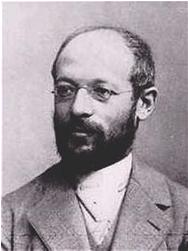
Georg Simmel was a German sociologist, philosopher, and critic.
In social psychology, an interpersonal relation describes a social association, connection, or affiliation between two or more persons. It overlaps significantly with the concept of social relations, which are the fundamental unit of analysis within the social sciences. Relations vary in degrees of intimacy, self-disclosure, duration, reciprocity, and power distribution. The main themes or trends of the interpersonal relations are: family, kinship, friendship, love, marriage, business, employment, clubs, neighborhoods, ethical values, support and solidarity. Interpersonal relations may be regulated by law, custom, or mutual agreement, and form the basis of social groups and societies. They appear when people communicate or act with each other within specific social contexts, and they thrive on equitable and reciprocal compromises.
Dyadic describes the interaction between two things, and may refer to:

Social exchange theory is a sociological and psychological theory that studies the social behavior in the interaction of two parties that implement a cost-benefit analysis to determine risks and benefits. The theory also involves economic relationships—the cost-benefit analysis occurs when each party has goods that the other parties value. Social exchange theory suggests that these calculations occur in romantic relationships, friendships, professional relationships, and ephemeral relationships as simple as exchanging words with a customer at the cash register. Social exchange theory says that if the costs of the relationship are higher than the rewards, such as if a lot of effort or money were put into a relationship and not reciprocated, then the relationship may be terminated or abandoned.
In sociology, social action, also known as Weberian social action, is an act which takes into account the actions and reactions of individuals. According to Max Weber, "Action is 'social' insofar as its subjective meaning takes account of the behavior of others and is thereby oriented in its course."

In the social sciences, social groups can be categorized based on the various group dynamics that define social organization. In sociological terms, groups can fundamentally be distinguished from one another by the extent to which their nature influence individuals and how. A primary group, for instance, is a small social group whose members share close, personal, enduring relationships with one another. By contrast, a secondary group is one in which interactions are more impersonal than in a primary group and are typically based on shared interests, activities, and/or achieving a purpose outside the relationship itself.

The sociology of culture, and the related cultural sociology, concerns the systematic analysis of culture, usually understood as the ensemble of symbolic codes used by a member of a society, as it is manifested in the society. For Georg Simmel, culture referred to "the cultivation of individuals through the agency of external forms which have been objectified in the course of history". Culture in the sociological field is analyzed as the ways of thinking and describing, acting, and the material objects that together shape a group of people's way of life.

In sociology, social psychology studies the relationship between the individual and society. Although studying many of the same substantive topics as its counterpart in the field of psychology, sociological social psychology places relatively more emphasis on the influence of social structure and culture on individual outcomes, such as personality, behavior, and one's position in social hierarchies. Researchers broadly focus on higher levels of analysis, directing attention mainly to groups and the arrangement of relationships among people. This subfield of sociology is broadly recognized as having three major perspectives: Symbolic interactionism, social structure and personality, and structural social psychology.
The following outline is provided as an overview of and topical guide to interpersonal relationships.
The social penetration theory (SPT) proposes that as relationships develop, interpersonal communication moves from relatively shallow, non-intimate levels to deeper, more intimate ones. The theory was formulated by psychologists Irwin Altman of the University of Utah and Dalmas Taylor of the University of Delaware in 1973 to understand relationship development between individuals. Altman and Taylor noted that relationships "involve different levels of intimacy of exchange or degree of social penetration". SPT is known as an objective theory as opposed to an interpretive theory, meaning it is based on data drawn from actual experiments and not simply from conclusions based on individuals' specific experiences.
Kinship terminology is the system used in languages to refer to the persons to whom an individual is related through kinship. Different societies classify kinship relations differently and therefore use different systems of kinship terminology; for example, some languages distinguish between consanguine and affinal uncles, whereas others have only one word to refer to both a father and his brothers. Kinship terminologies include the terms of address used in different languages or communities for different relatives and the terms of reference used to identify the relationship of these relatives to ego or to each other.
Relational dialectics is an interpersonal communication theory about close personal ties and relationships that highlights the tensions, struggles and interplay between contrary tendencies. The theory, proposed respectively by Leslie Baxter and Barbara Montgomery in 1988, defines communication patterns between relationship partners as the result of endemic dialectical tensions. Dialectics are described as the tensions an individual feels when experiencing paradoxical desires that we need and/ or want. The theory contains four assumptions, one of them being that relationships are not one dimensional, rather, they consist of highs and lows, without moving in only one direction. The second assumption claims that change is a key element in relational life, in other words, as our lives change, our relationships change with it. Third, is the assumption that, “contradictions or tensions between opposites never go away and never cease to provide tension,” which means, we will always experience the feelings of pressure that come with our contradictory desires. The fourth assumption is that communication is essential when it comes to working through these opposing feelings. Relationships are made in dialogue and they can be complicated and dialogue with similarities and differences are necessary. Relational communication theories allow for opposing views or forces to come together in a reasonable way. When making decisions, desires and viewpoints that often contradict one another are mentioned and lead to dialectical tensions. Leslie A. Baxter and Barbara M. Montgomery exemplify these contradictory statements that arise from individuals experience dialectal tensions using common proverbs such as "opposites attract", but "birds of a feather flock together"; as well as, "two's company; three's a crowd" but "the more the merrier". This does not mean these opposing tensions are fundamentally troublesome for the relationship; on the contrary, they simply bring forward a discussion of the connection between two parties.

Deviance or the sociology of deviance explores the actions and/or behaviors that violate social norms across formally enacted rules as well as informal violations of social norms. Although deviance may have a negative connotation, the violation of social norms is not always a negative action; positive deviation exists in some situations. Although a norm is violated, a behavior can still be classified as positive or acceptable.
Triad refers to a group of three people in sociology. It is one of the simplest human groups that can be studied and is mostly looked at by microsociology. The study of triads and dyads was pioneered by German sociologist Georg Simmel at the end of the nineteenth century.
The Vertical Dyad Linkage Theory is a theory that deals with the individual dyadic relationships formed between leaders and their subordinates. It is also widely known as TheLeadership-Member Exchange (LMX) Theory. Originally, the theory has been developed by Fred Dansereau, George Graen and William J. Haga, in 1975.

A social network is a social structure made up of a set of social actors, sets of dyadic ties, and other social interactions between actors. The social network perspective provides a set of methods for analyzing the structure of whole social entities as well as a variety of theories explaining the patterns observed in these structures. The study of these structures uses social network analysis to identify local and global patterns, locate influential entities, and examine network dynamics.
Affiliative conflict theory (ACT) is a social psychological approach that encompasses interpersonal communication and has a background in nonverbal communication. This theory postulates that "people have competing needs or desires for intimacy and autonomy". In any relationship, people will negotiate and try to rationalize why they are acting the way they are in order to maintain a comfortable level of intimacy.
How to set boundaries in a relationship
A duocentric social network is a type of social network composed of the combined network members of a dyad. The network consists of mutual, overlapping ties between members of the dyad as well as non-mutual ties. While an explicit conceptualization of duocentric social networks appeared for the first time in an academic publication in 2008, the history of the analysis dates back to at least the 1950s and has spanned the fields of psychology, sociology, and health.
Relationship science is an interdisciplinary field dedicated to the scientific study of interpersonal relationship processes. Due to its interdisciplinary nature, relationship science is made-up of researchers of various professional backgrounds within psychology and outside of psychology, but most researchers who identify with the field are psychologists by training. Additionally, the field's emphasis has historically been close and intimate relationships, which includes predominantly dating and married couples, parent-child relationships, and friendships & social networks, but some also study less salient social relationships such as colleagues and acquaintances.




